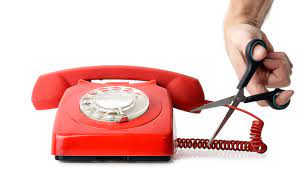 You may not have noticed much about the death of landlines. But it has been underway for a while, and now the government is supporting their demise. For some time now, telephone companies like AT&T have been trying to eliminate landlines and are no longer required to maintain these copper connections. You probably think, well that must be good, because those landlines cost as much as $55/month. So that’s a cost savings, right? But wait.
You may not have noticed much about the death of landlines. But it has been underway for a while, and now the government is supporting their demise. For some time now, telephone companies like AT&T have been trying to eliminate landlines and are no longer required to maintain these copper connections. You probably think, well that must be good, because those landlines cost as much as $55/month. So that’s a cost savings, right? But wait.
Remember that landlines identify the exact location of callers. Down to the street and home, a landline 911 call pinpoints the exact location of the caller. Yes, of course, that was always an issue in high-rise buildings. But even in 2012, it was obvious what the carriers wanted to do, and everyone knew the impact it might have on older adults. But cost matters, and at $55/month, a landline may look dispensable. So who knew that 52% of the 65+ have landlines (possibly in addition to a cell/smartphone). Now consider that one out of three 911 calls are from the 65+.
Oops – that brings up another problem. It turns out that the 5500 emergency call centers may not be able to locate the person who is calling from a cell phone. Did you know that 911 calls from cellphones/smartphones are misrouted because almost 50% of US call centers cannot locate the person, and further, cannot receive a text message or a photo of the location. One fire chief in Ohio notes that he could get an Uber to show up faster than an ambulance. All because these centers haven't been updated to the latest technology. Yet estimates show that if 1 minute were shaved off emergency response time, 10,000 lives could be saved each year. Could that mean that a third of those possible lives lost are aged 65+?
As we used to say, technology changes everything. Not necessarily for the better. The misrouting of emergency calls from cellphones was an unintended consequence of the push by carriers to lower their own costs to maintain old lines. But like other transitions, think 3G to 5G, for example, unless the impact is made visible, the change can go unnoticed. In that 5G upgrade case, you may have noticed a side effect – more older adults acquired smartphones, coincidentally when the clamshell phone needed replacement and were harder to find in the stores. The landline-to-cell switchover also seems like a good idea – almost, but not quite. Maybe now that the foot dragging of call center upgrades is well publicized, the laggards will move more quickly. Hopefully.

 You may not have noticed much about the death of landlines.
You may not have noticed much about the death of landlines.